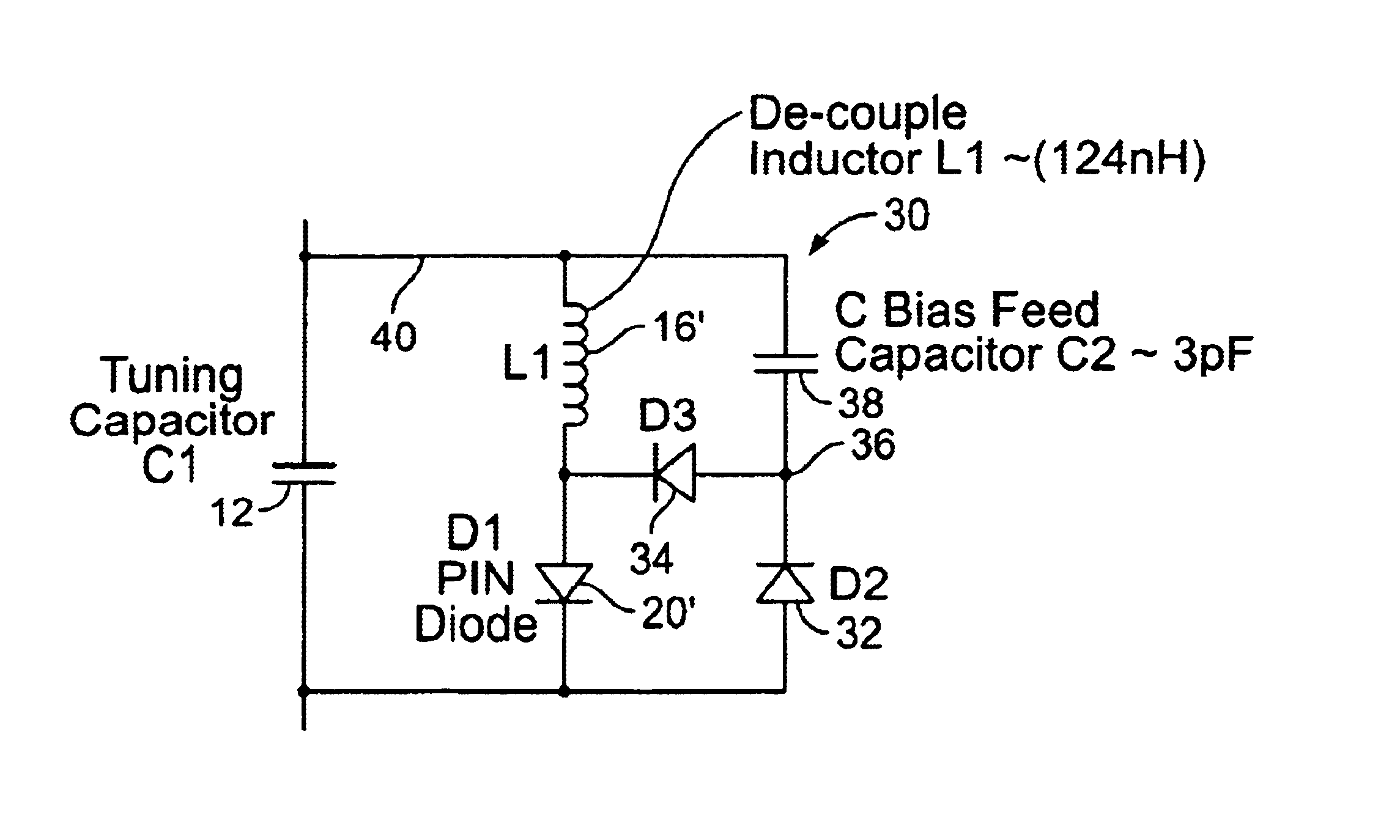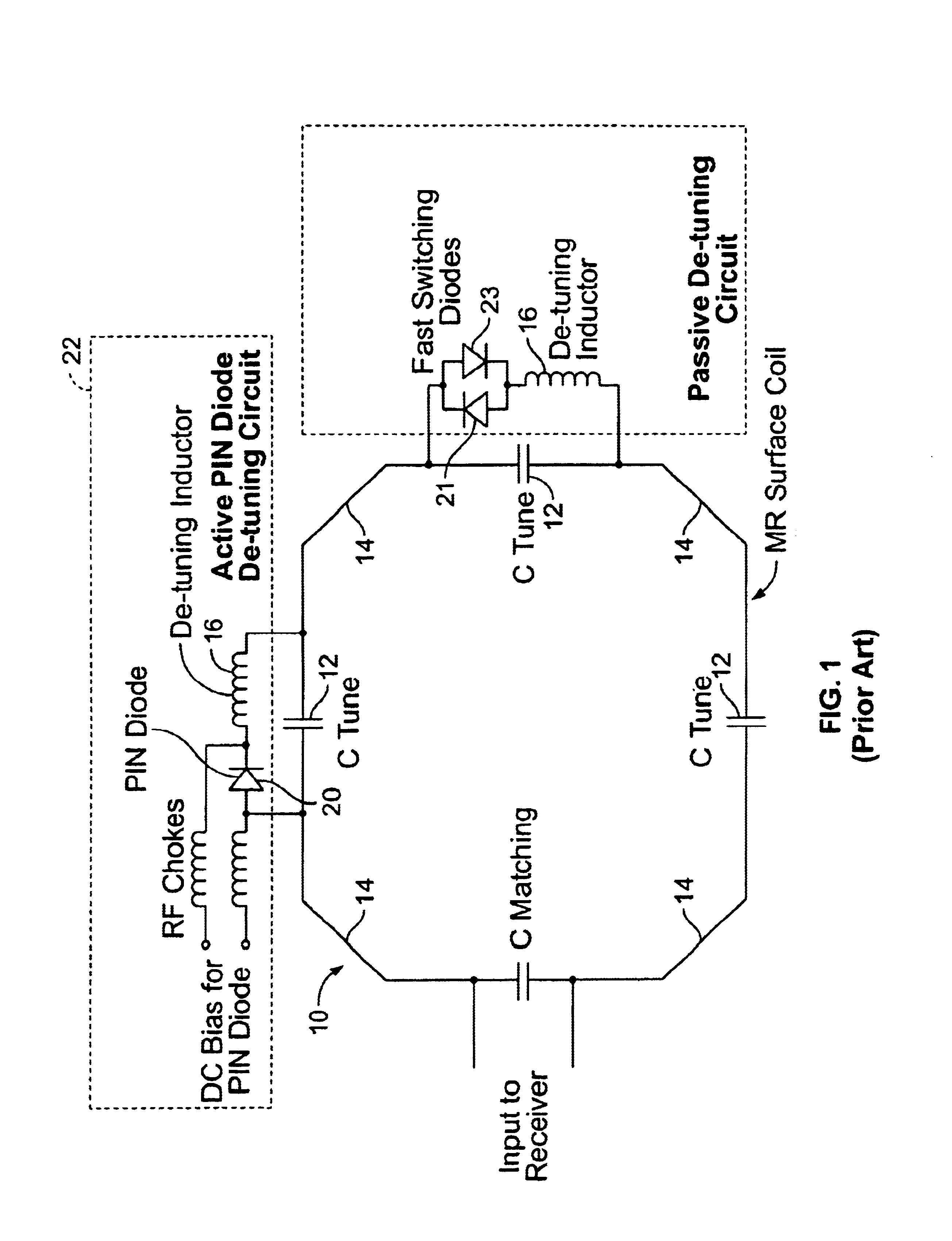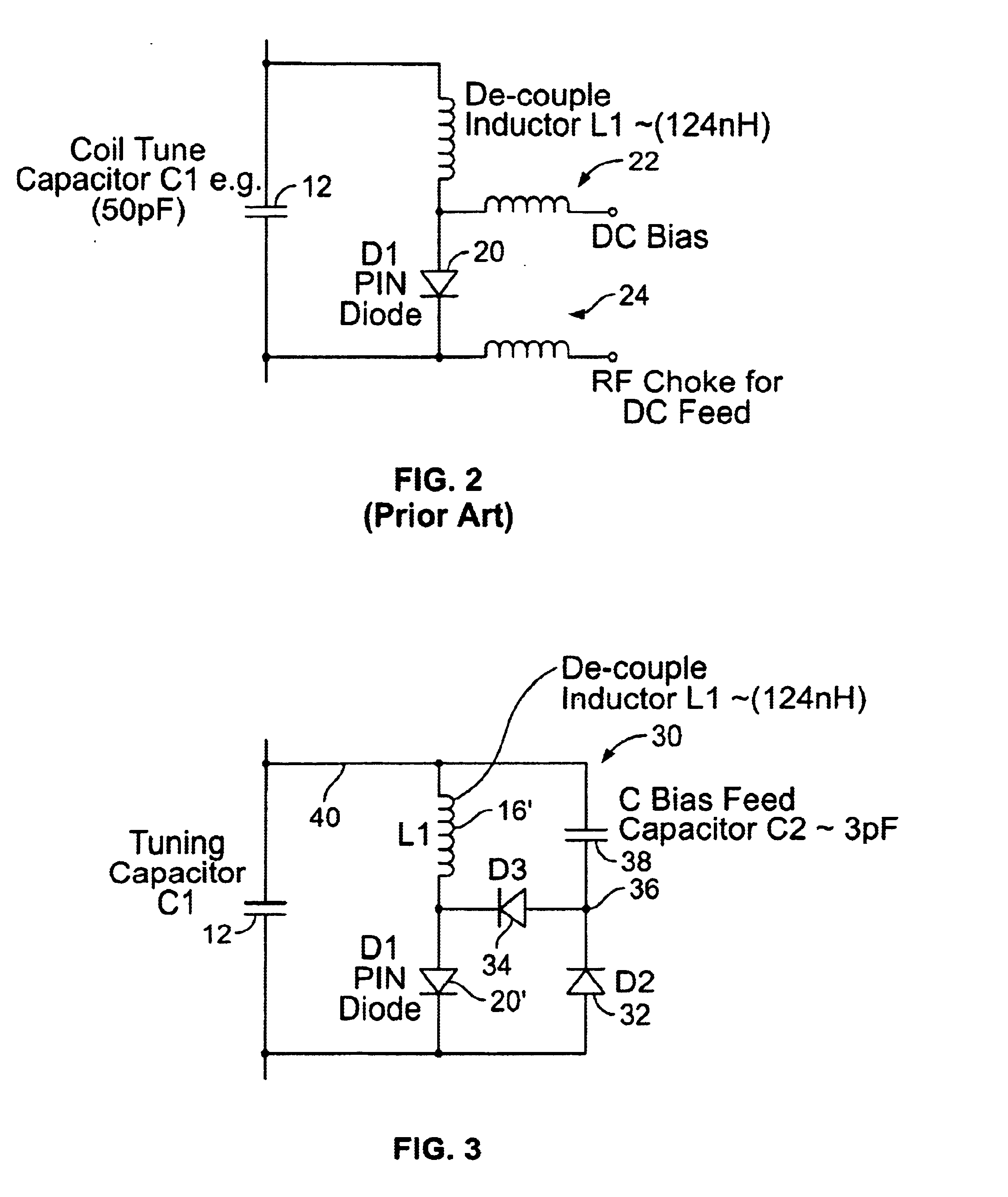Transmit mode coil detuning for MRI systems
a technology of magnetic resonance imaging and transmit mode, applied in the field of radio frequency coils, can solve the problems of large coils, lower signal-to-noise ratio (snr or s/n), and inconvenience of feeding dc current to all diodes, and achieve the effect of reducing “blocking” impedance and creating heat during transmitting
- Summary
- Abstract
- Description
- Claims
- Application Information
AI Technical Summary
Benefits of technology
Problems solved by technology
Method used
Image
Examples
Embodiment Construction
Referring to FIG. 3, an auto-bias detuning circuit 30 includes a detuning inductor 16′ and PIN diode 20′ (or other suitably “slow” diode) in parallel with the tuning capacitor 12. Switching diodes 32, 34 (or other diodes that can switch at the RF frequency) are connected in parallel with the PIN diode 20′. The common node 36 of the diodes 32, 34 is connected through a bias capacitor 38 to the detuning inductor node 40 of the capacitor 12. The diodes 20′, 32, 34 are arranged with the same polarity with respect to a serial path through the diodes 20′, 32, 34.
In normal operation, the RF voltages and currents in the coil 10 are on the order of hundreds of volts and several amperes, so it is feasible to take a small fraction of the available power for conversion to DC to forward bias the PIN diode 20′. This small power drain is much smaller than the power turned into heat by the switching losses in a normal passive de-coupler. During the negative going RF cycle, current flows through the...
PUM
 Login to View More
Login to View More Abstract
Description
Claims
Application Information
 Login to View More
Login to View More - R&D
- Intellectual Property
- Life Sciences
- Materials
- Tech Scout
- Unparalleled Data Quality
- Higher Quality Content
- 60% Fewer Hallucinations
Browse by: Latest US Patents, China's latest patents, Technical Efficacy Thesaurus, Application Domain, Technology Topic, Popular Technical Reports.
© 2025 PatSnap. All rights reserved.Legal|Privacy policy|Modern Slavery Act Transparency Statement|Sitemap|About US| Contact US: help@patsnap.com



